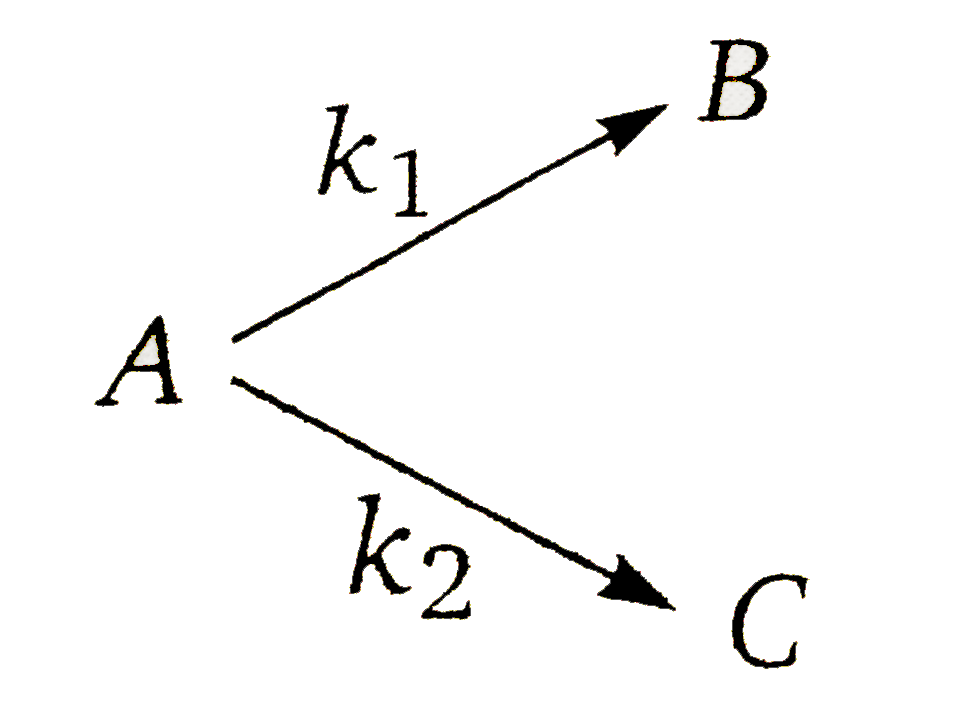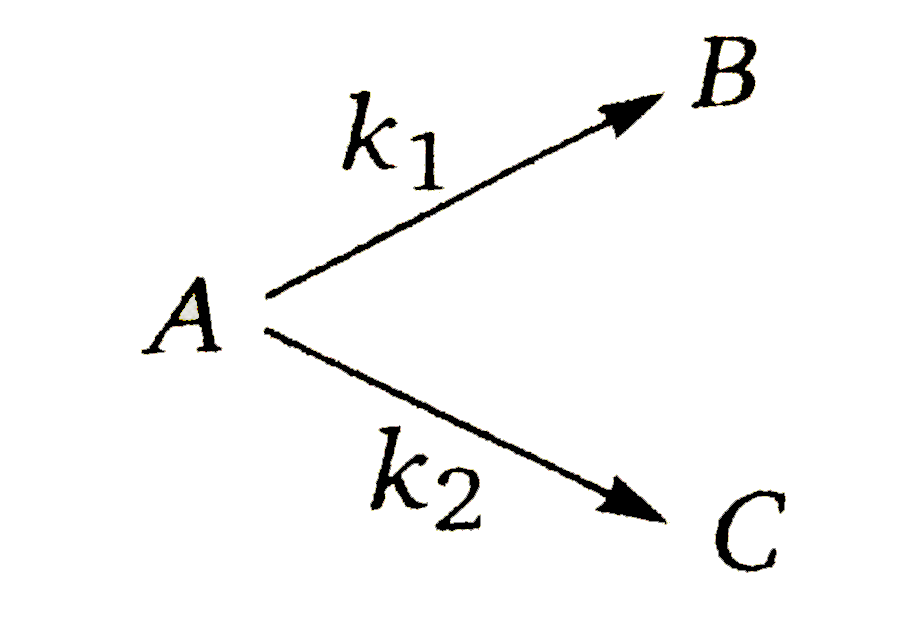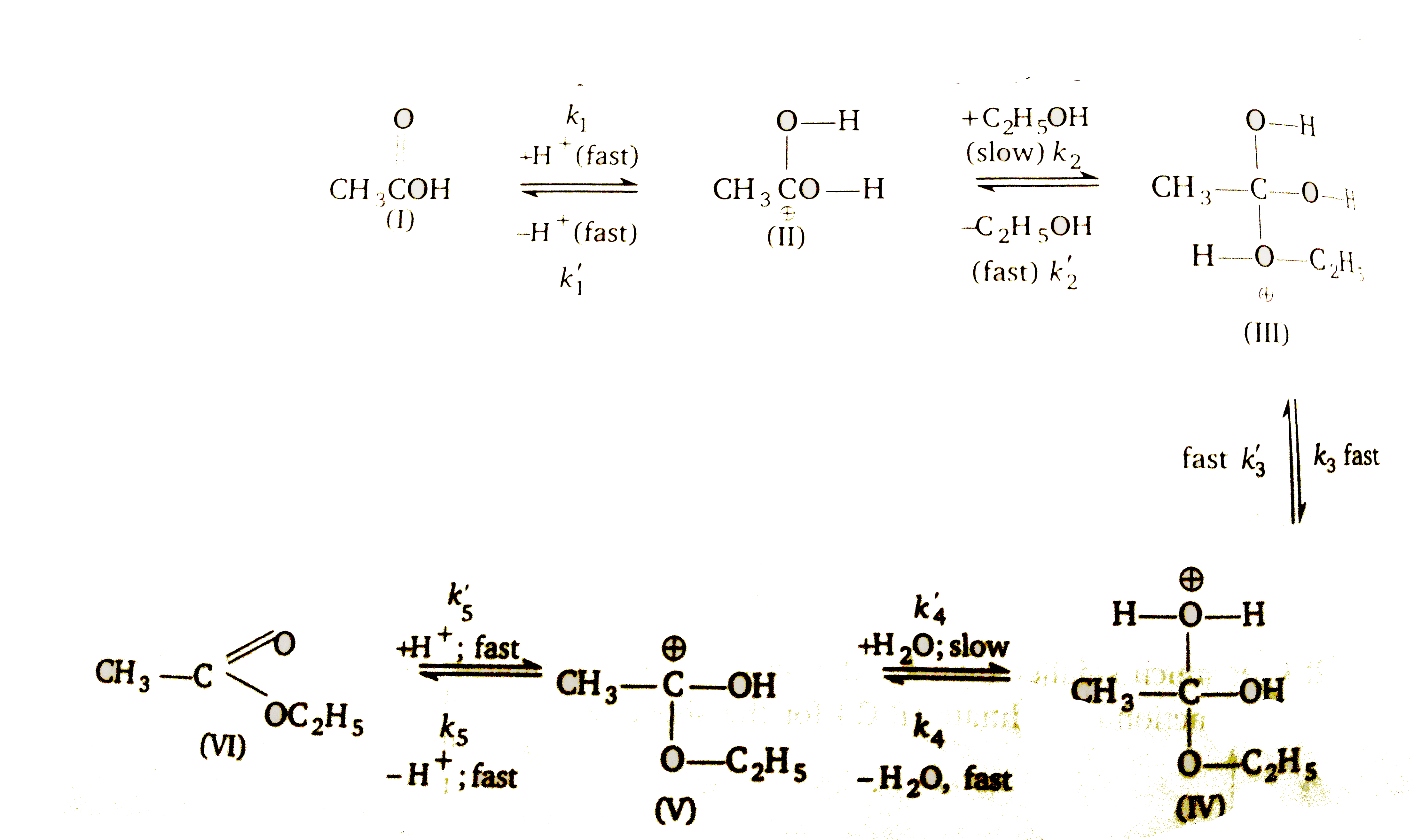Level 2 (Q.3 To Q.32) from NARENDRA AWASTHI Chapter 1 CHEMICAL KINETIC & NUCLEAR CHEMISTRY for Class 12
| Class 12 | CHEMISTRY |
| Chapter | CHEMICAL KINETIC & NUCLEAR CHEMISTRY |
| NARENDRA AWASTHI | Level 2 (Q.3 To Q.32) |
| Medium | English |
| Academic Year | 2023-2024 |
Question 1
The reaction A(g)→B(g)+2C(g) is a first order reaction with rate constant 2.772×10−3s−1, Starting with 0.1 mole of A in 2 litre vessel, find the concentration of A after 250 sec when the reaction is allowed to take place at constant pressure and at 300 K?
a) 0.0125M
b) 0.025M
c) 0.05M
d) none of theseView SolutionQuestion 2
A(aq)→B(aq)+C(aq) is first order reaction.
Time t ∞
moles of reagent n1 n2
Reaction prgress is measured with the help of titration of reagent 'R'. If all A, B and C react with reagent and have 'n' factors [n factor,eq. mass=mol.massn in the ratio of 1:2:3 with the reagent, the k in terms of t,n1andn_(2) is :View SolutionQuestion 3
The gaseous decomposition reaction, A(g)→2B(g)+C(g) is observed to first order over the excess of liquid water at 25∘C. It is found that after 10 minutes the total pressure of system is 188 torr and after very long time it is 388 torr. The rate constant of the reaction (in hr−1) is : [Given : vapour pressure of H2O at 25∘ is 28 torr (ln2=0.7, ln3=1.1,ln10=2.3)]
a) 0.02
b) 1.2
c) 0.2
d) none of theseView SolutionQuestion 4
The reaction ,SucroseH+−−→ Glucose + Fructose, take place at certain temperature while the volume of solution is maintained at 1 litre. At time zero the initial rotation of the mixture is 34∘. After 30 minutes the total rotation of solutions is 19∘ and after a very long time, the total roation is −11∘C Find the time when solution was optically inaactive.View SolutionQuestion 5
A compound A dissociates by two parallel first order paths at certain temperature
A(g)k1(−1min)−−−−−−→2B(g) k1=6.93×10−3−1min
A(g)k1(−1min)−−−−−−→C(g) k2=6.93×10−3−1min
The reaction is started with 1 mole of pure 'A' litre closed container with initial pressure 2 atm. What is the pressure (in atm) developed in container after 50 minutes from start of experiment?View SolutionQuestion 6
The reaction cis-Xcis-Xkf<kb⇒ trans-X is first order in both direction At 25∘C, the equilibrium constant is 0.10 and the rate constant kf=3×10−4s−1 In an experiment starting with the pure cis- from , how long would it take for half of the equilibrium amount of the trans-iomer to be fromed?View SolutionQuestion 7
Consider the reaction.

The rate constant for two parallel reactions were found to be 10−2dm−2mol−1s−1 and 4×10−2dm−3mol−1s−1 . If the corresponding energies of activation of the parallel reaction are 100 and 120 kJ/mol respectively, what is the net energy of activation (Ea) of A View SolutionQuestion 8
A reaction takes place in various steps. The rate constatn for first, second, third and fifth steps are k1,k2,k3 and k5 respectively The overall rate constant is given by
k=k2k3(k1k5)1/2
If activation energy are 40, 60, 50, and 10 kJ/mol respectively, the overall energy of activation (kJ/mol) is : View SolutionQuestion 9
For reaction A→B, the rate constant k1=A1e−Ea1/(RT) and for the reactio X→Y, the rate constant k2=A2e−Ea2/(RT) . If A1=108,A2=1010 and Ea1=600 cal /mol, Ea2=1800 cal/mol then the temperature at which k1=k2 is (Given :R=2 cal/K-mol)
a) 1200 K
b) 1200×4.606K
c) 12004.606K
d) 6004.606KView SolutionQuestion 10
For first order parallel reactions k1 and k2 are 4and 2min(−1) respectively at 300 K. If the activation energies for the formation of B and C are respectively 30,000 and 38,314 joule/ mol respectively, the temperature at which B and C will be obtained in equimolar ratio is :
 View Solution
View SolutionQuestion 14
Upon irradiating californium with neutrons, a scientist discovered a new nuclide having mass number of 250 and a half-life of 30 min. After 90 min. of irradiation, the observed radioactivity due to nuclied was 100 dis/min. How many atoms of the nucliede were prepared intially?
a) 2.4×104
b) 3.46×104
c) 1900
d) 800 View SolutionQuestion 17
A fresh radioactive mixture contians short lived sppecies A and B. Both emitting α-particles intially of 8000 α particles per minute. 20 minutes later, they emis at the rate of 3500 α -particles per minute. If the half-lives of the species A and B are 10 minutes and 500 hours respectively, then the ratio of activities of A: B the intial mixture was: View SolutionQuestion 18
In order to determine the volume of blood in an animal, a 1.0mL sample of solution of 103 dpm of .31H is injected into the animal blood stream. After sufficient time for circulatory equilibrium to be established, 2mL of blood is found to have activity to 10 dpm. The volume of blood in animal is :
a) 199 mL
b) 198 mL
c) 200 mL
d) 20 mLView Solution
All Exercises from NARENDRA AWASTHI Class 12 CHEMISTRY CHEMICAL KINETIC & NUCLEAR CHEMISTRY
- Exercise
- Level 1 (Q.123 To Q.150)
- Level 1 (Q.3 To Q.32)
- Level 1 (Q.33 To Q.62)
- Level 1 (Q.63 To Q.92)
- Level 1 (Q.93 To Q.122)
- Level 2
- Level 2 (Q.3 To Q.32)
- Level 2 (Q.33 To Q.35)
- Level 3 - Assertion - Reason Type Questions
- Level 3 - One Or More Answers Are Correct
- Level 3 - Passage
- Level 3 - Subjective Problems
